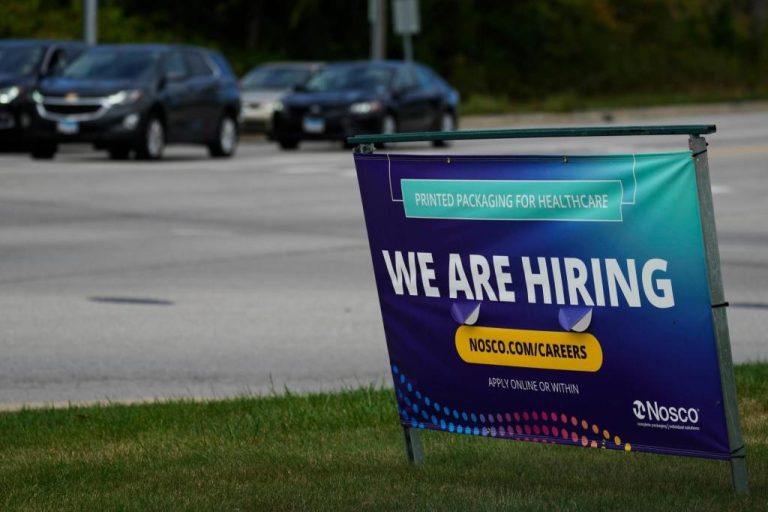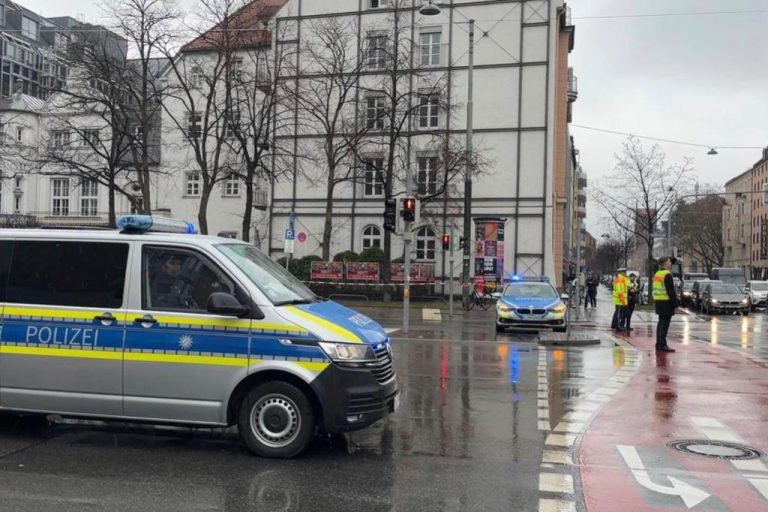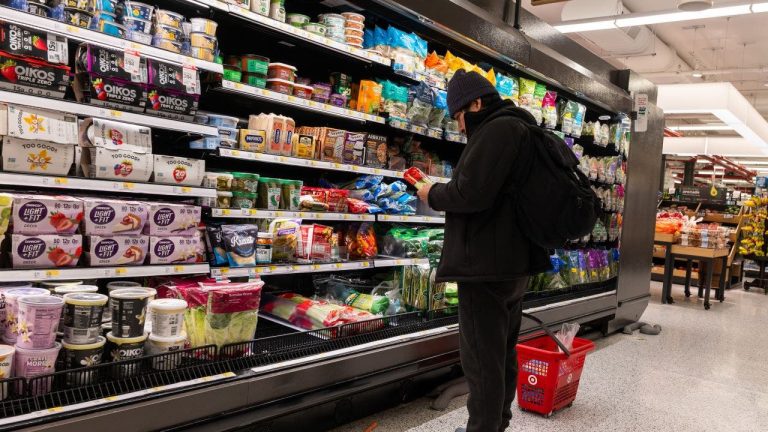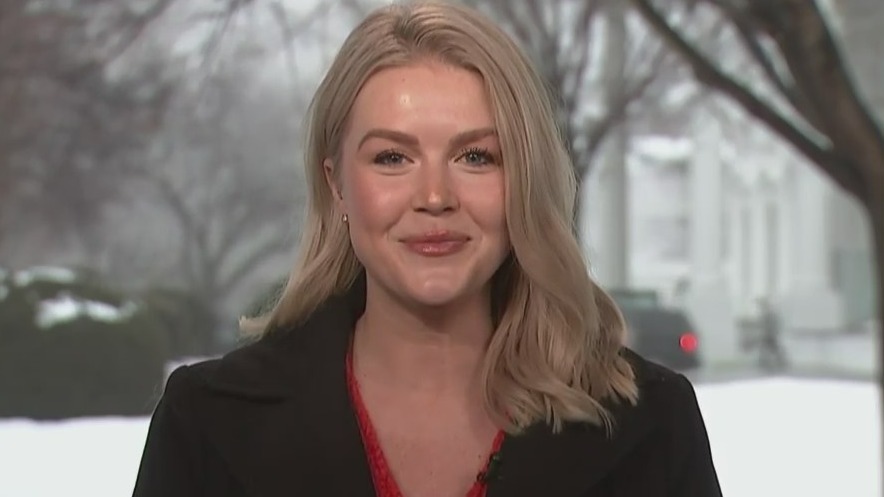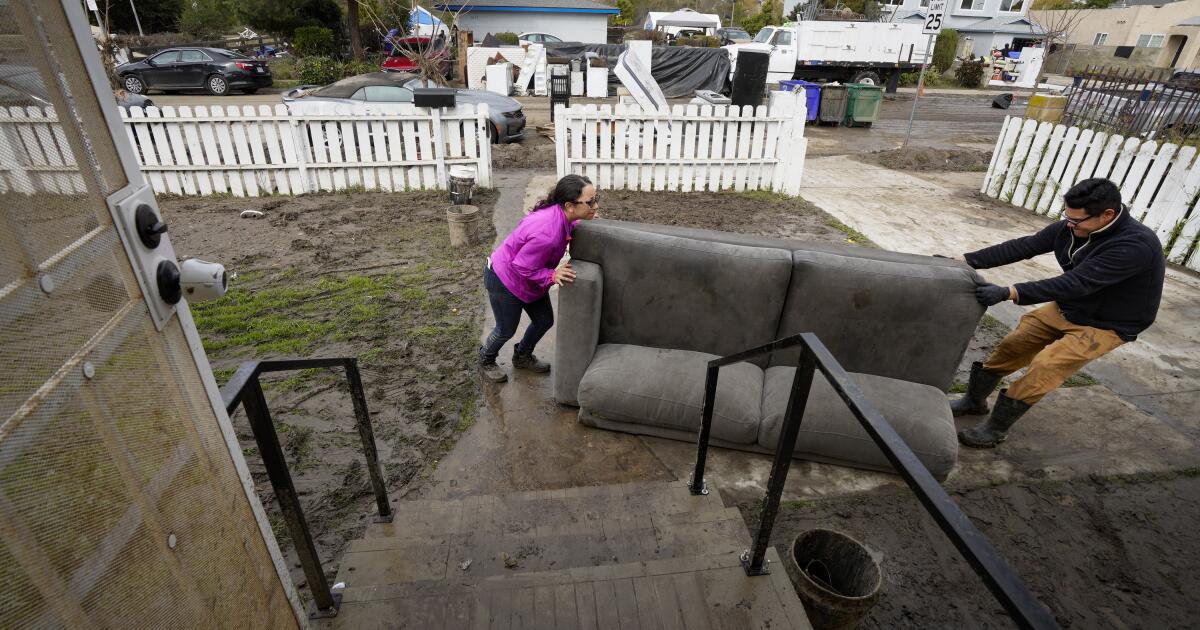
San Diego city and county officials are trying to figure out just how much damage was left behind as the region continues recovering from Monday’s record-setting storm — one now suspected to have been deadly.
While no deaths were reported in the city of San Diego, three people outside the city died in ways suspected to be storm-related — including a man and a woman whose bodies were found in Santee. Both remain unidentified. In Lemon Grove, a 67-year-old man died after his vehicle collided with debris.
This is free for all readers.
As a public service, The San Diego Union-Tribune is making its storm and flood coverage free for all readers. To support our work and enjoy full access to all our journalism, please consider subscribing. For the latest news as it breaks, get our free email news alerts.
The excruciating cleanup work continued on Wednesday, with many flood victims trying to figure out what comes next. How much assistance might be available from state and federal governments remained unclear.
County officials hope flood victims will step forward to report the damage via an online survey. It’s a big part of deciding how much assistance will come to the region. Nearly 1,500 residents had already filled out the survey as of Wednesday evening.
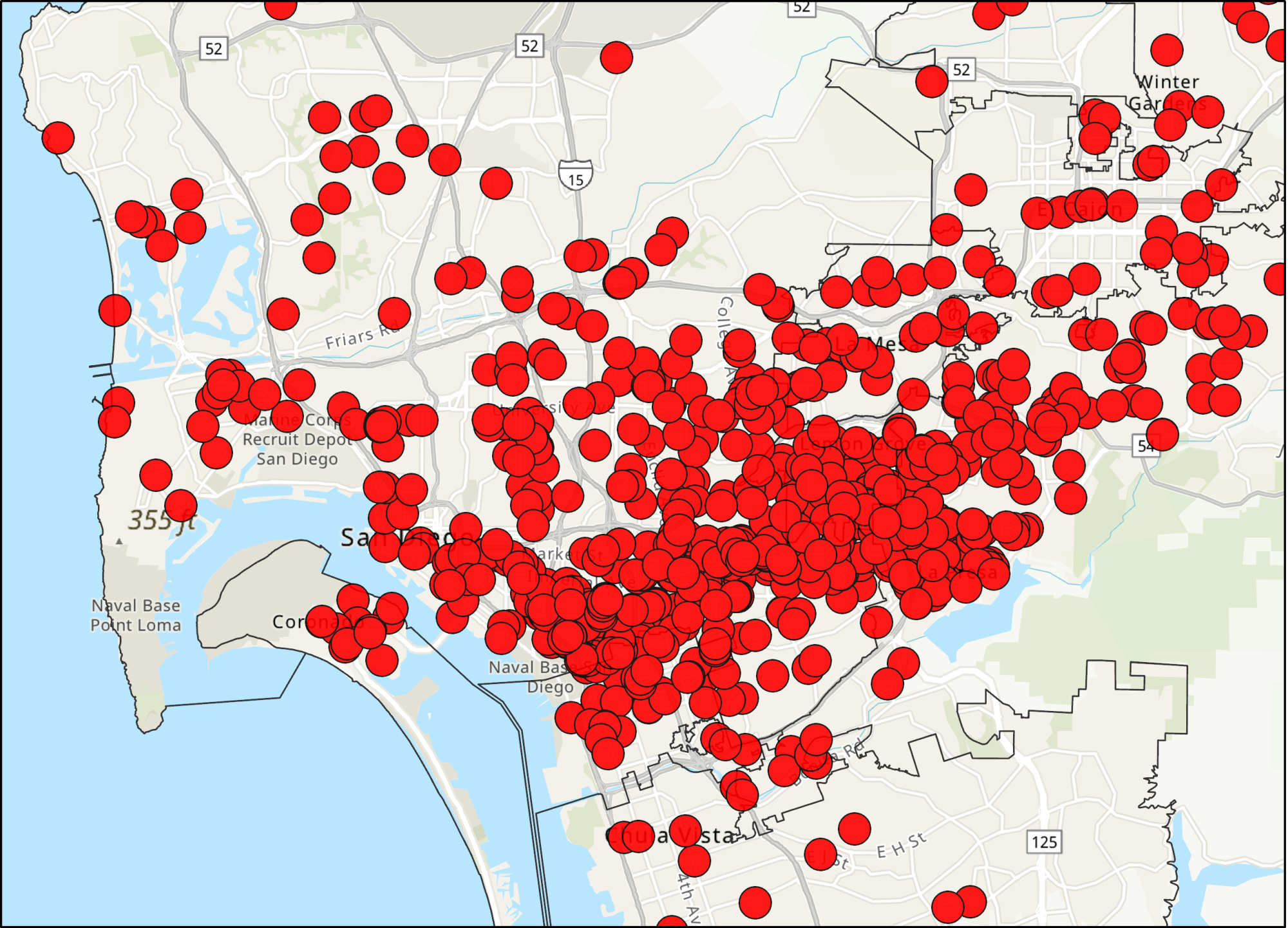
Each dot represents a location where damage from Monday’s storm was reported via online surveys from residents and business owners. The map is limited to the areas with the highest density of reports.
(Courtesy of San Diego County)
One Red Cross shelter remains open. The site, at Lincoln High School in San Diego’s Lincoln Park, was housing 53 people from a total of 23 families as of Wednesday. The shelter in Bostonia just outside El Cajon closed Wednesday.
Seven dogs were being housed at the Lincoln High site, San Diego Humane Society spokesperson Nina Thompson said. There are also pet supplies available there.
Wednesday brought a bit of good news in one location: Residents of San Diego’s first safe-sleeping site, at 20th and B streets, have been allowed to return.
But it still remains unclear whether one homeless shelter downtown can be salvaged. City crews are still evaluating the Alpha Project tent near 16th Street and Newton Avenue, which was evacuated in a scramble as several feet of water rose inside. Hundreds of people who had been staying there were offered cots at the Balboa Park Activity Center.
And as the cleanup continues, so do the after-action assessments. San Diego Gas & Electric on Wednesday said staff crunched the numbers and found that the peak of the outages occurred Monday between noon and 12:30 p.m., when 25,115 customers across the county were without power.
Investigators are still trying to piece together what happened to the two people found dead in Santee. A spokesperson for the Medical Examiner’s Office provided little information, but said they are being investigated as storm-related deaths.
The death of Harold James Hooker, 67, which had already been publicly reported, is also suspected to be storm-related, the spokesman said. Hooker was driving a minivan on Lemon Grove Avenue just after 5:30 p.m. when the vehicle slammed into concrete debris in the roadway, went up an embankment, hit a utility pole and flipped.
It was still unclear what happened to an unknown man with a dog who was seen by first responders going underwater in Spring Valley on Monday.
In the Tijuana River Valley, San Diego Humane Society officers and lifeguards used a boat to rescue what at first appeared to be a dog trapped in a flooded field — with a bucket on its head. The animal turned out to be a coyote. It’s recovering before it will be released back in the wild.
‘Going to have to start from scratch’

Cesar Sanchez, 28, carries a keyboard to landfill truck.
(Nelvin C. Cepeda/The San Diego Union-Tribune)
On hard-hit Beta Street in Southcrest where streets are still caked in mud, residents cleared out their flood-damaged homes, carrying ruined belongings to the curb to be hauled off. San Diego officials said there were 13 packer trucks in affected areas to pick up bulky items, as well as other city efforts to begin removing mud from public areas.
A man from a car removal service, Instant Cash for Cars, was purchasing flood-destroyed vehicles and towing them off.
At least 100 residents gathered on the street to voice their anger. A representative from District 8 Councilmember Vivien Moreno’s office was there to listen and field concerns.
Kristina Lemoine, whose family has lived in the neighborhood for the last 40 years, said the problem began long before Monday’s storm. She points to inadequate management of the vegetation in Southcrest Trails Park, which she says has prevented water from properly flowing in the canal running through the park near homes.
Lemoine said she and her mother have submitted at least 30 requests to clean up the area on the city’s Get It Done app — where San Diegans can submit orders for improvement areas throughout the city — over the last 10 years.
“This is our neighborhood and we care about it,” Lemoine said. “The more I walk down the street, I cry.”
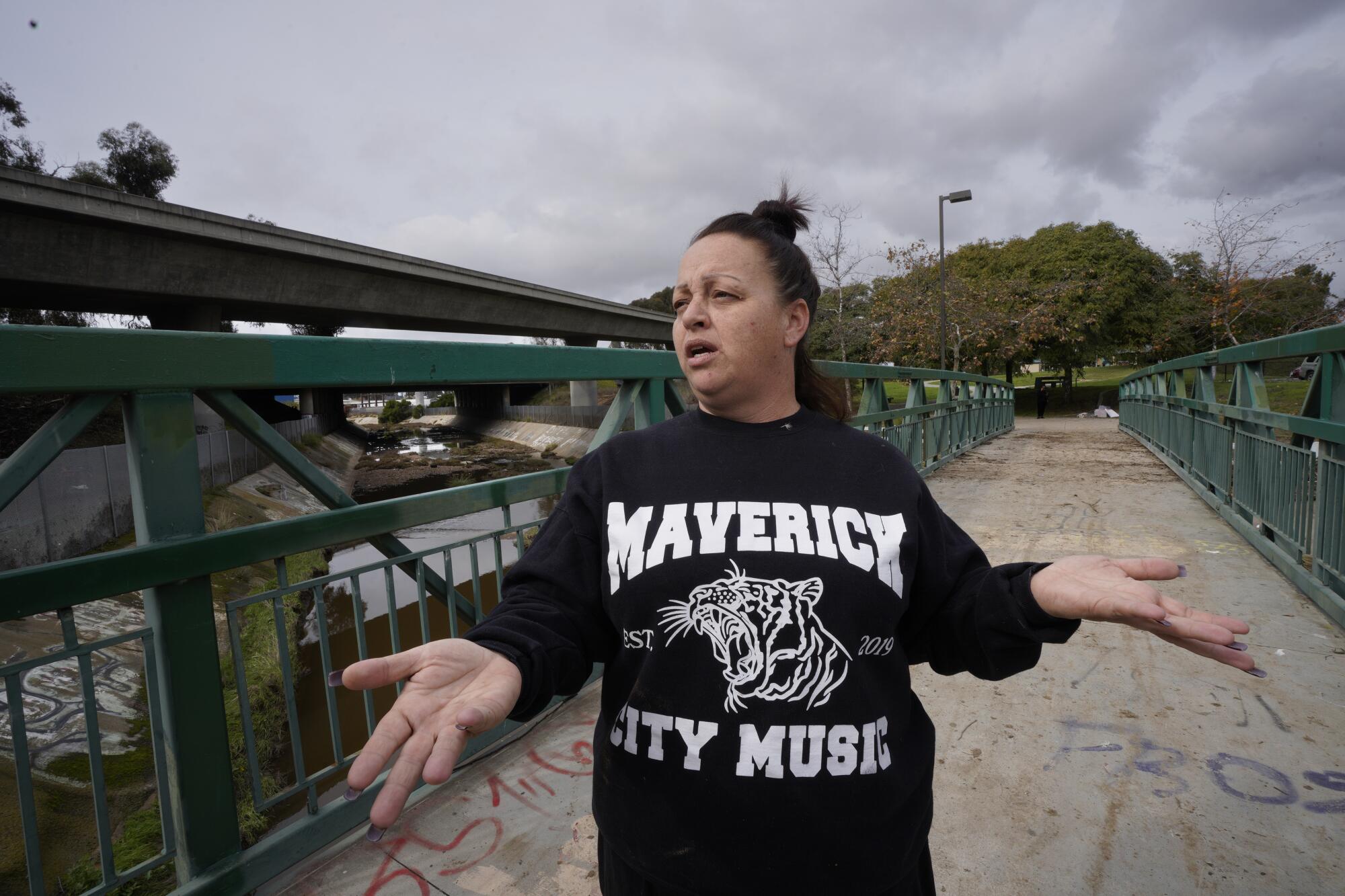
Kristina Lemoine points out how the flood channel was filled with debris before Monday’s rain storm.
(Nelvin C. Cepeda/The San Diego Union-Tribune)
Residents Martha Navarro, 34, and her husband Jose Navarro, 28, haven’t yet told their sons, who are 3 and 5 years old, about what happened to their home, which they bought two years ago. Martha Navarro said she was traumatized by Monday’s events. She had raced home during the storm to save her 3-month-old puppy, which she saw on the home’s security camera struggling in high water in the backyard.
The Navarro family are first-time homeowners and said they pay about $700 a year for flood insurance on top of regular homeowner’s insurance. Even with help from that coverage, the family isn’t sure they’ll stay in the home because of concerns over mold.
Elvira Paulin, 43, lives with her husband and five children in a two-story home they rent on Beta Street. The flood destroyed the bottom floor so they are living on the second story. Paulin said her landlord terminated her month-to-month lease agreement after the flood. She doesn’t know what to do.
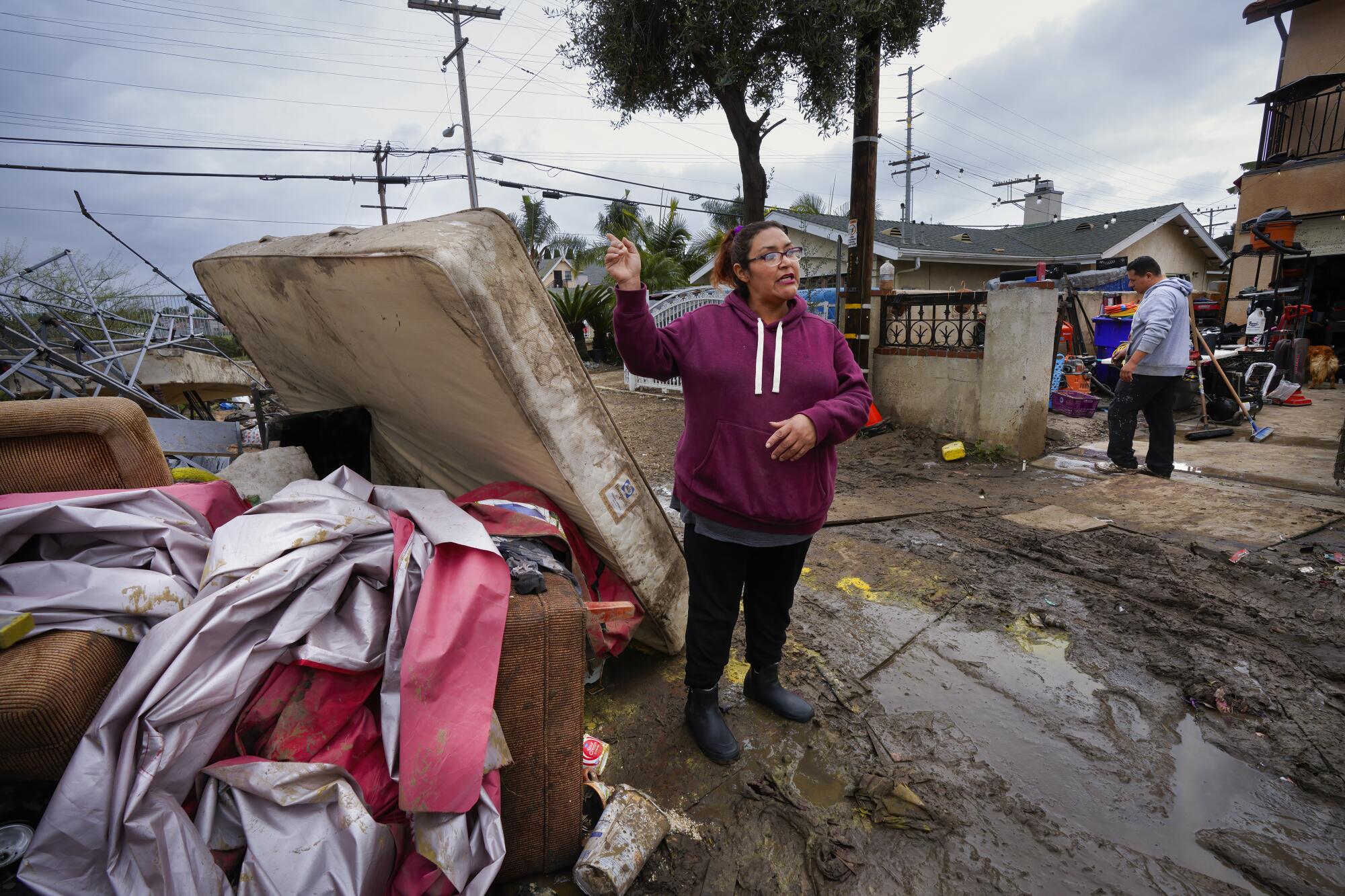
Elvira Paulin and her husband, Julian Rincon, removed all their flood-damaged items from their four-bedroom rental home and placed them in the ally to be hauled away to the landfill.
(Nelvin C. Cepeda/The San Diego Union-Tribune)
“Everything is so expensive,” Paulin said, pointing to the costs of moving out and securing a deposit for a new place. “Plus, you’re going to have to start from scratch.”
Many people turned to each other and to social media, such as the Barrio Logan Facebook page, to learn about community services being offered.
People in nearby communities stepped in to provide warm food, blankets and hygiene supplies. A small group from Barrio Logan is collecting donations at Memorial Community Park and distributing them to neighborhoods in Encanto, Southcrest, Mountain View and to unhoused people downtown.
On Wednesday evening, Cholo Tacos Food Truck set up on Birch Street and gave out free birria tacos.
How much aid might come?

The residents on Beta Street in Southcrest begin the cleanup Wednesday after their homes were flooded by Monday’s storm.
(Nelvin C. Cepeda/The San Diego Union-Tribune)
As the trucks haul away wet trash and people navigate for help, the city of San Diego and the county are busy assessing exactly how much damage has occurred. It’s a key step before the region can even hope for formal federal assistance.
The question remains: How much aid from the state and federal government can it expect to help residents and businesses, plus cover the millions of dollars in damage?
Based on information provided by the county of San Diego via an online survey, more than 400 homes in the city of San Diego were damaged. Neighborhoods that were hardest hit are in council Districts 4 and 8 in the southern part of the city, said city spokesperson Nicole Darling.
San Diego’s Stormwater Department received more than 500 calls regarding flooding and other issues during and following the rain. Six of the city’s 15 stormwater pump stations were overwhelmed during Monday’s storm, with two still out of service. Crews have been working nonstop, Darling said, to bring them back online.
By mid-day Tuesday, San Diego had logged at least $6 million to $7 million in damage to public infrastructure, and the city hopes it will be reimbursed by the state.
The city and county have already declared states of emergency, as has Gov. Gavin Newsom’s office, but the most significant source of financial aid would come from the federal government. That requires a disaster declaration from President Joe Biden — no easy task.
An assessment of total damages is required, along with evidence that “the situation is beyond the capability of the State and affected local governments,” states the Federal Emergency Management Agency on its webpage.
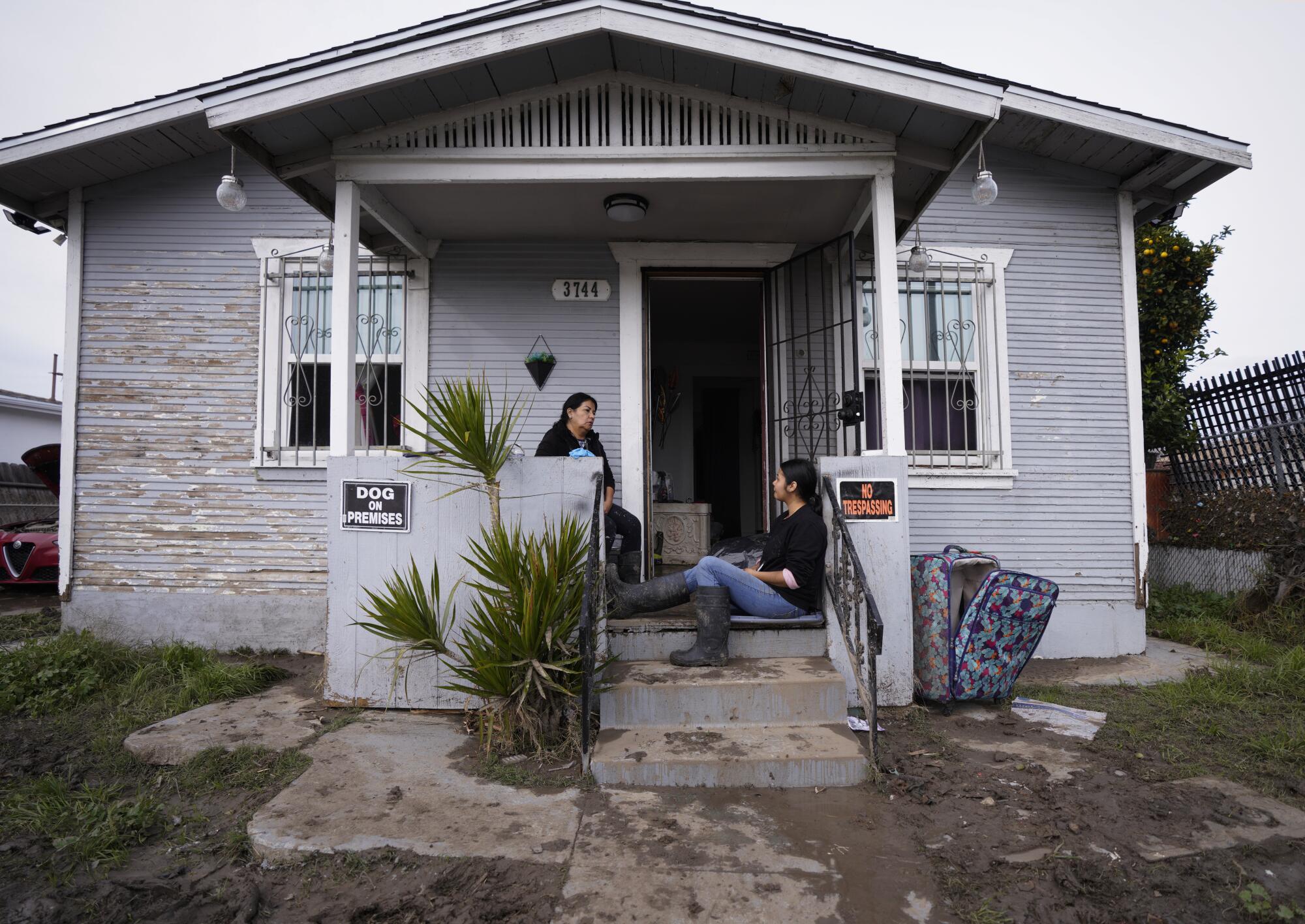
Estella Hernandez, 58, and her daughter in law, Karina Zavala, 37, find a time for a very short break. The family has been removing their flood-damaged items from their home to the curb where it will be hauled away to the landfill.
(Nelvin C. Cepeda/The San Diego Union-Tribune)
A request for a presidential disaster declaration would come from the state, with supporting data provided by San Diego County.
Public assistance could include help with debris removal, as well as emergency work and the repair of damaged facilities such as roads, bridges and water control facilities.
The county’s survey is the first step toward getting state and federal aid.
The survey “is not a claim,” county spokesperson Chuck Westerheide said. “It doesn’t mean that we’re going to come with a pile of money. But it does give us more information, and that information will be used to try and work to get assistance for the entire county.”
The county does not yet have an accurate tally of total damage in dollars and cents. The city of San Diego is expected to make a separate ask for assistance.
Federal aid, though, is not guaranteed.
“The amount of assistance that we get will be dependent on a bar that they set, a threshold that they set,” Westerheide explained. “And we won’t know yet whether we meet that bar for federal assistance, or if we’re really ‘San Diegans taking care of San Diegans.’”
People whose homes were flooded will likely need recovery assistance from multiple agencies, he noted.
Assistance from the state as a result of the governor’s declaration is less about cash and more about assistance in the form of workers on the ground, as well as regulatory waivers to speed up the recovery process — such as bids for repairs or renewing a driver’s license.
“Usually money comes from other programs outside the state of emergency,” said Brian Ferguson, a spokesperson for California’s Office of Emergency Services. “If there are shelters, the state’s social services department will pay the local government or Red Cross. And Cal Fire has an emergency fund for swift water rescues.”
He noted that the state already has deployed thousands of workers in San Diego to help respond to the storm — before and after.
“In most cases, we want to be there before the crisis occurs,” Ferguson said. “So there were state workers pre-positioned, and a state of emergency helps expedite that and pay for that.”
Staff writers Rob Nikolewski, Blake Nelson and Caleb Lunetta contributed to this story.
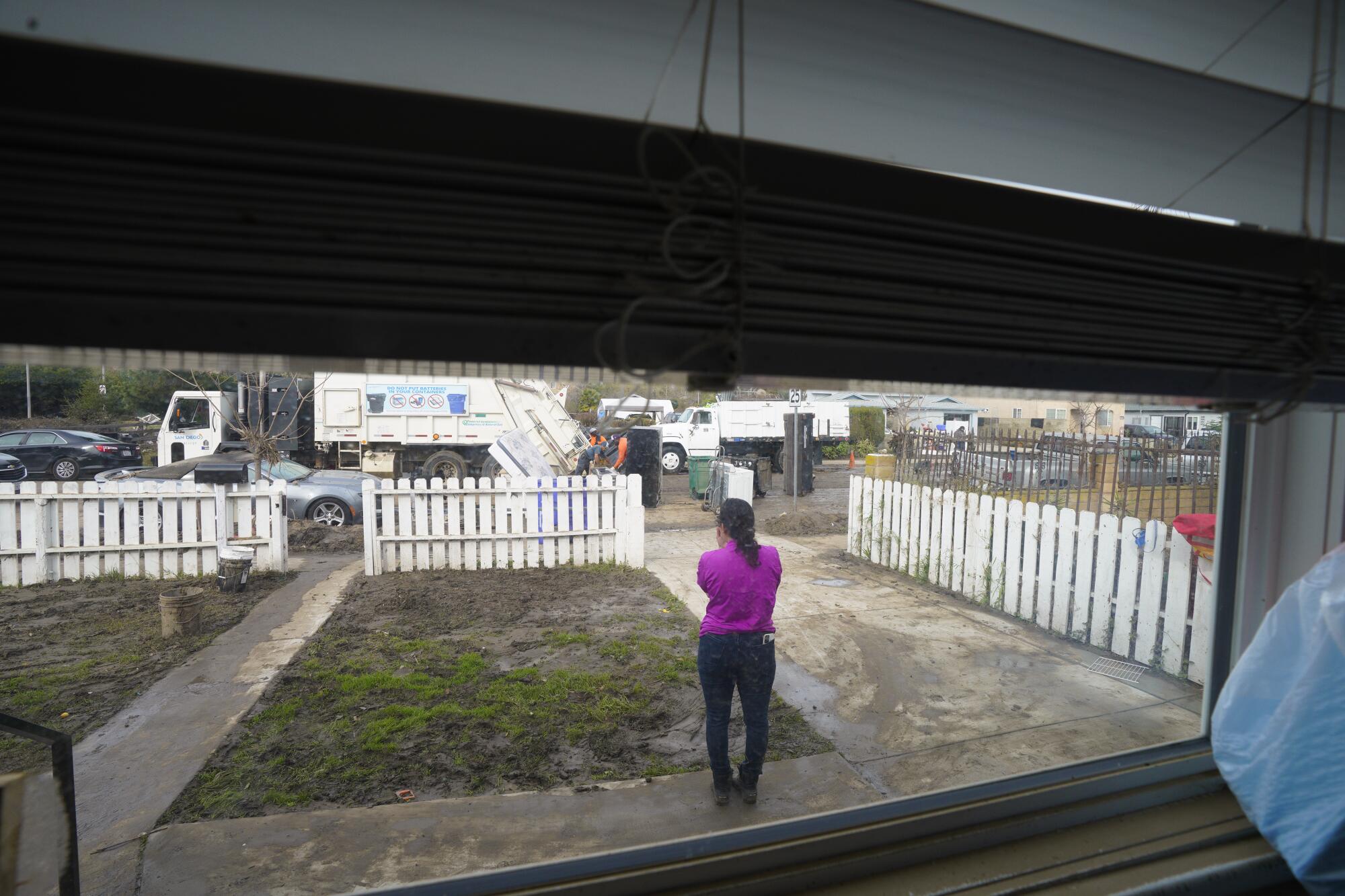
Martha Navarro watched as her flood-damaged furniture and appliances were hauled away to the landfill.
(Nelvin C. Cepeda/The San Diego Union-Tribune)


